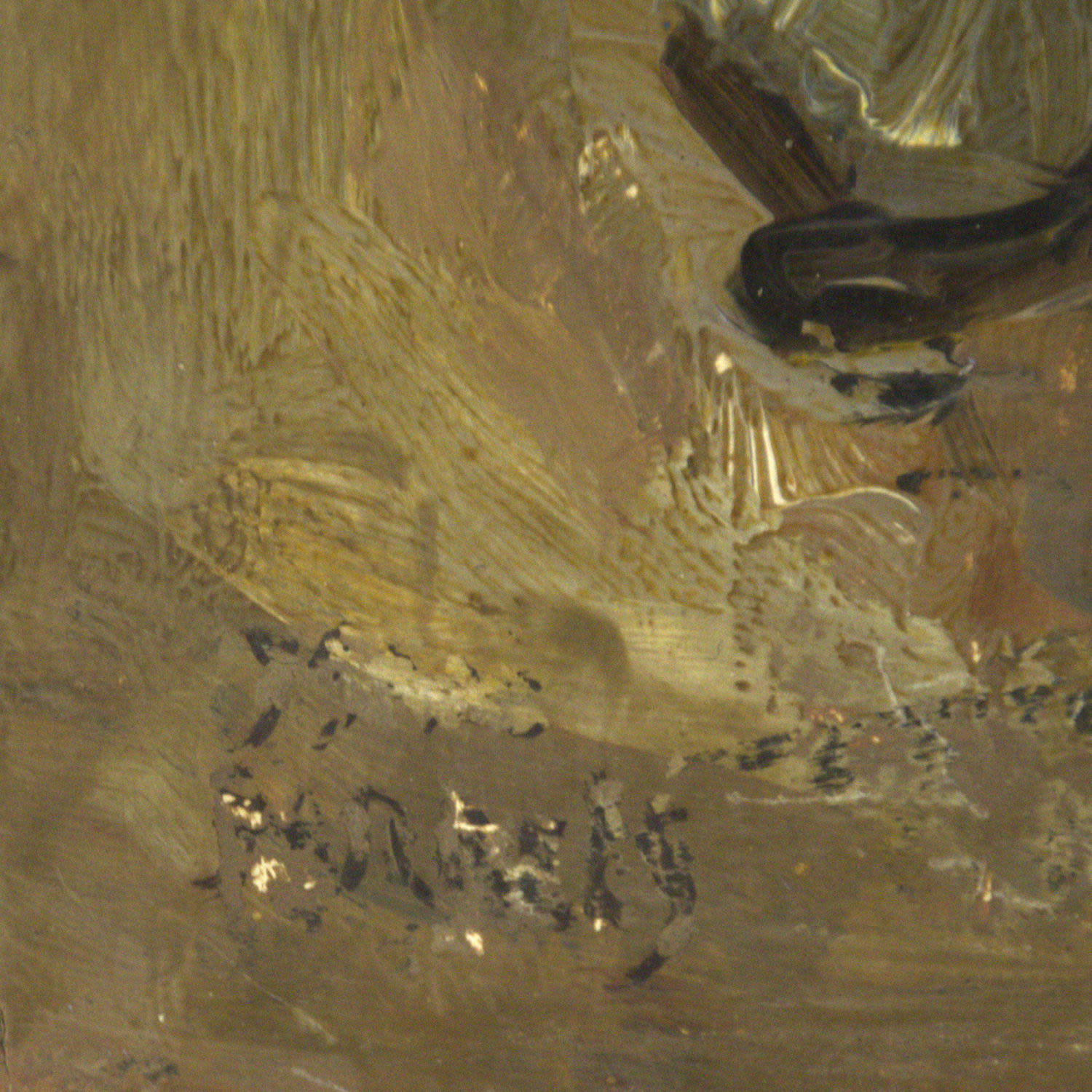Prev Lot 0160: Isaac Israels (1865-1934) - Figures in the Street, Oil on Board. Next
Isaac Lazarus Israels (Dutch, 1865-1934) - Figures in the Street, Oil on Board. Signed. 31.5x36cm. Minor wear, Crack to the board. Isaac Lazarus Israels was a Dutch painter associated with the Amsterdam Impressionism movement. The son of Jozef Israels, one of the most respected painters of the Hague School, and Aleida Schaap, Isaac Israels displayed precocious artistic talent from an early age. Between 1880 and 1882 he studied at the Royal Academy of Art, The Hague, where he met George Hendrik Breitner who was to become a lifelong friend. In 1881, when he was 16, he sold a painting, Bugle Practice, even before it was finished to the artist and collector Hendrik Willem Mesdag. Two portraits he made in the same year of his grandmother and a family friend, Nannette Enthoven, attest to the technical ability he had attained by that age. Starting in 1878, Israels made annual visits to the Salon des Artistes Francais with his father and in 1882 made his debut there with Military Burial. In the 1885 Salon he received an honourable mention for his Transport of Colonial Soldiers. At this time he was reading Emile Zola, as was Breitner, and following his triumph at the Salon he spent a year travelling in the Belgian mining districts and elsewhere. Beginning 1886, Israels lived in Amsterdam and registered with Breitner at the Royal Academy of Visual Arts to complete his schooling. Both of them, however, quickly abandoned the academy for the more progressive circle of the Tachtigers, an influential group of writers and artists of the time. This was a group that insisted style must reflect content and that emotionally charged subjects can only be represented by an equally intense technique. Influenced by this philosophy, Israels became a painter of the streets, cafes, and cabarets of Amsterdam. At this time he met the Dutch engraver and painter Willem de Zwart who also became a lifelong friend. He often spent his summers with his father in the Dutch seaside resort of Scheveningen near The Hague. Guests included Edouard Manet and Max Liebermann. Interested by the changing light of sun and sea, he painted many colourful seaside scenes. Towards the end of the century, Israels was introduced by his childhood friend and portrait painter Therese Schwartze to the Amsterdam fashion house Hirsch & Cie at the Leidseplein. Israels portrayed the whole range of the world of haute couture, from seamstress to wealthy client, gaining access even to the fitting-rooms. Israels moved to Paris in 1904, establishing his studio at 10 rue Alfred Stevens, near Montmartre and just yards away from the studio of Henri de Toulouse-Lautrec whom he admired, as he also did Edgar Degas. As in Amsterdam, he painted the Parisian specific motifs: the public parks, cafes, cabarets and bistros, as well as such subjects as fairgrounds and circus acrobats. Likewise he sought out the fashion houses Paquin and Drecoll to continue his studies of the world of fashion. However, he only exhibited once in this period, in 1909. At the outbreak of the First World War he was living in London, where he found new subjects in horse-riding at Rotten Row and in ballerinas and boxers. He returned to Holland for the duration of the war, living alternately in The Hague, Amsterdam and Scheveningen, where he worked primarily as a portrait painter. Amongst his sitters was Magaretha Gertrud Zelle, better known as Mata Hari, executed as a spy in France in 1917. Her portrait can be seen at the Kroller-Muller Museum. Other sitters included Johanna van Gogh-Bonger and the feminist physician Aletta Jacobs, although he also portrayed ordinary subjects such as girls in the street and telephone operators. Following the war, Israels visited Paris, Copenhagen, Stockholm and London. He spent the years 1921 to 1922 travelling in India and the Dutch East Indies, sketching and painting the vibrant life of South East Asia and notably the gamelan players of Bali. On his return, he settled at Koninginnegracht 2, The Hague, his deceased parents' home, where he remained for the rest of his life, nevertheless making regular trips abroad to London, Italy and the French Riviera. At the age of 63, he won a Gold Medal at the 1928 Olympic Games for his painting Red Rider, an art competition then being part of the games. He died in The Hague on 7 October 1934, aged 69, as a result of a street accident a few days before. His partner at that time was Sophie de Vries. Source: Wikipedia.
$8000-$16000
$1000


